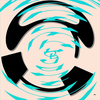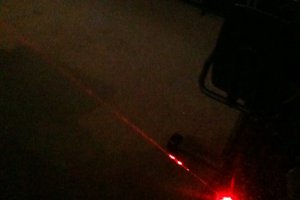Follow me on Twitter: @SteveSchuler20 and right here on Hackaday: KRA5H.
For the 2016 Hackaday Prize, I've decided to incorporate this project into a much larger set of projects that altogether I call my Lego Optics Lab. The following are all the various parts an projects that are included:
This project (the one you're looking at right now), of course.
Lego Optics Lab: Beam Splitter
Lego Optics Lab: Mirror/Filter Holder
Lego Optics Lab: Small Lens Holder
Lego Optics Lab: Large Lens Holder
Lego Optics Lab: Panoramic Mount
Lego Optics Lab: Simple Pan/Tilt Mount
Lego Optics Lab: Worm Drive Pan/Tilt Mount
Lego Optics Lab: Mobile Phone/iPod Mount
Lego VR Goggles: Lego Optics Lab DIY Stereoscope
I built a Michelson interferometer for my Lego optics lab with frickin' laser beams. But first:
GRAVITATIONAL WAVES DETECTED 100 YEARS AFTER EINSTEIN'S GENERAL RELATIVITY
11 February 2016 -- For the first time, scientists have observed ripples in the fabric of spacetime called gravitational waves, arriving at the earth from a cataclysmic event in the distant universe. This confirms a major prediction of Albert Einstein's 1915 general theory of relativity and opens an unprecedented new window onto the cosmos.
Gravitational waves carry information about their dramatic origins and about the nature of gravity that cannot otherwise be obtained. Physicists have concluded that the detected gravitational waves were produced during the final fraction of a second of the merger of two black holes to produce a single, more massive spinning black hole. This collision of two black holes had been predicted but never observed.
The gravitational waves were detected on September 14, 2015 at 5:51 a.m. Eastern Daylight Time (9:51 a.m. UTC) by both of the twin Laser Interferometer Gravitational-wave Observatory (LIGO) detectors, located in Livingston, Louisiana, and Hanford, Washington, USA. The LIGO Observatories are funded by the National Science Foundation (NSF), and were conceived, built, and are operated by Caltech and MIT. The discovery, accepted for publication in the journal Physical Review Letters, was made by the LIGO Scientific Collaboration (which includes the GEO600 Collaboration and the Australian Consortium for Interferometric Gravitational Astronomy) and the Virgo Collaboration using data from the two LIGO detectors.
Source: http://www.ligo.org/news.php
I've provided a couple of my designs to build your own table top laser interferometer to get a basic understanding of how they work and how sensitive they can be.
SpyNet Laser Tripwire Laser Interferometer
This is a simple build of a Michelson Interferometer using the SpyNet Laser Tripwire. A few years ago, I accidentally came across this toy and noticed that it has a red laser and two adjustable mirrors. It also has a receiver that will sound an alarm when the laser beam that shines on it is blocked. I had to wait for an after Christmas sale and found a set for 80% off (about $5.00 USD which was less than purchasing a laser pointer and two makeup mirrors). Remember, do not shine the laser beam into your eyes, nor anyone else's.
Parts needs from the Laser Tripwire set:
Laser
2 Adjustable mirrors
Additional Parts:
CD clamshell
Cardboard backing from a 8 ½ X 11 notepad
Sheet of blank white printer paper 8 ½ X 11
4 Paperclips
Large binder clip
A magnifying lens (mine came from my telescope)
Something to prop the lens on (I used my copy of The Complete Works of Shakespeare)
Here’s the layout of the interferometer:


Lego Laser Interferometer
Since it's so easy to build a laser interferometer, I decided to build one for my Lego optics lab.
A table-top interferometer will not be able to detect gravity waves because there is too much noise in the surrounding environment and you need a really big laser interferometer to distinguish between gravitational waves and such mundane things as earthquakes, traffic passing by, or someone dropping a coffee mug in the kitchen. The LIGO, or Laser Interferometer Gravitational-Wave...
Read more » Steve Schuler
Steve Schuler

 Ben Wiener
Ben Wiener
 ThunderSqueak
ThunderSqueak
 J
J
 Florian Festi
Florian Festi
Laser interferometry can determine the diameter of fibers with a circular cross-section. The fiber is placed in the beam, and the interference fringes are projected onto a screen. 2.3. The interference pattern varies in intensity. Browse Around here to see about the optics.